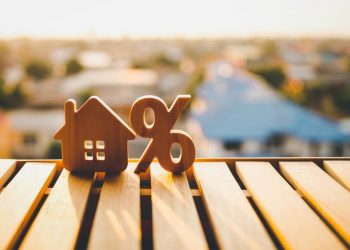Continuing a recent wavering trend, existing-home sales skidded at the start of the year, according to the January National Association of REALTORS® report. Last month, the adjusted annualized rate of sales totaled 5.46 million, down 1.3 percent month-over-month, but up 9.6 percent year-over-year.

“Existing-home sales are off to a strong start at 5.46 million,” according to Lawrence Yun, chief economist at NAR. “The trend line for housing starts is increasing and showing steady improvement, which should ultimately lead to more home sales.”
In January, the amount of existing homes on the market totaled 1.42 million, up 2.2 percent from the month prior, but down 10.7 percent year-over-year.
Across all house types (single-family, condo, co-op and townhome), the median price was $266,300—a 6.8 percent increase year-over-year, according to the report. The median price for sales in the single-family space was $268,600, while the condo median was $248,100.
“Mortgage rates have helped with affordability, but it is supply conditions that are driving price growth,” says Yun.
By region:
Midwest
Existing-Home Sales: 1.29 million (+8.4% YoY)
Median Price: $200,000 (+5.4% YoY)
Northeast
Existing-Home Sales: 730,000 (+7.4% YoY)
Median Price: $312,100 (+11.5% YoY)
South
Existing-Home Sales: 2.38 million (+11.7% YoY)
Median Price: $229,900 (+6.3% YoY)
West
Existing-Home Sales: 1.06 million (+8.2% YoY)
Median Price: $393,800 (+5.2% YoY)
Currently, inventory is at a 3.1-month supply, the report shows. In January, the average existing-home listing was on the market for 43 days, six days less than the previous year. Of homes sold, 42 percent were on the market for less than one month.
Of the adjusted annualized rate of sales, 4.85 million were single-family, while condo and co-op sales totaled 610,000. Twenty-one percent of sales were all-cash, and 17 percent by individual investors or second homebuyers. Two percent were distressed. First-time homebuyers comprised 32 percent of sales.
“It is good to see first-time buyers slowly stepping into the market,” says Yun. “The rise in the homeownership rate among the younger adults, under 35, and minority households means an increasing number of Americans can build wealth by owning real estate. Still, in order to further expand opportunities, significantly more inventory and home construction are needed at the affordable price points.”
According to the realtor.com® Market Hotness Index, included in the NAR report, the hottest markets in January were: Fort Wayne, Ind.; San Francisco-Oakland-Hayward, Calif.; Sacramento-Roseville-Arden-Arcade, Calif.; Lafayette-West Lafayette, Ind.; and San Jose-Sunnyvale-Santa Clara, Calif.
“We are hopeful and also confident that home sales will improve this year,” NAR President Vince Malta says. “NAR has and will continue to do its part in the industry, reiterating the social and economic benefits of homeownership and advancing conversations surrounding housing affordability concerns.”
On the report, Bill Banfield, executive vice president of Capital Markets at Quicken Loans, said in a statement: “It doesn’t matter how low interest rates are; if there are limited choices of homes on the market, sales will suffer and prices could keep going up. The constraints in housing may be aided by building new homes, but there is such pent-up demand it is unlikely to get back into balance in the near future.”
For more information, please visit www.nar.realtor.












